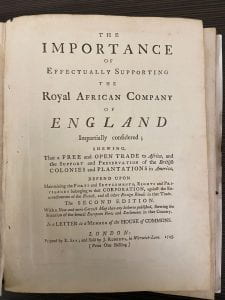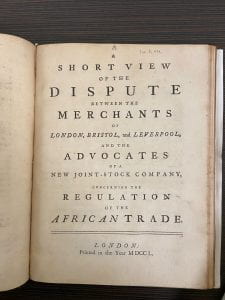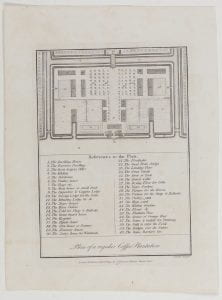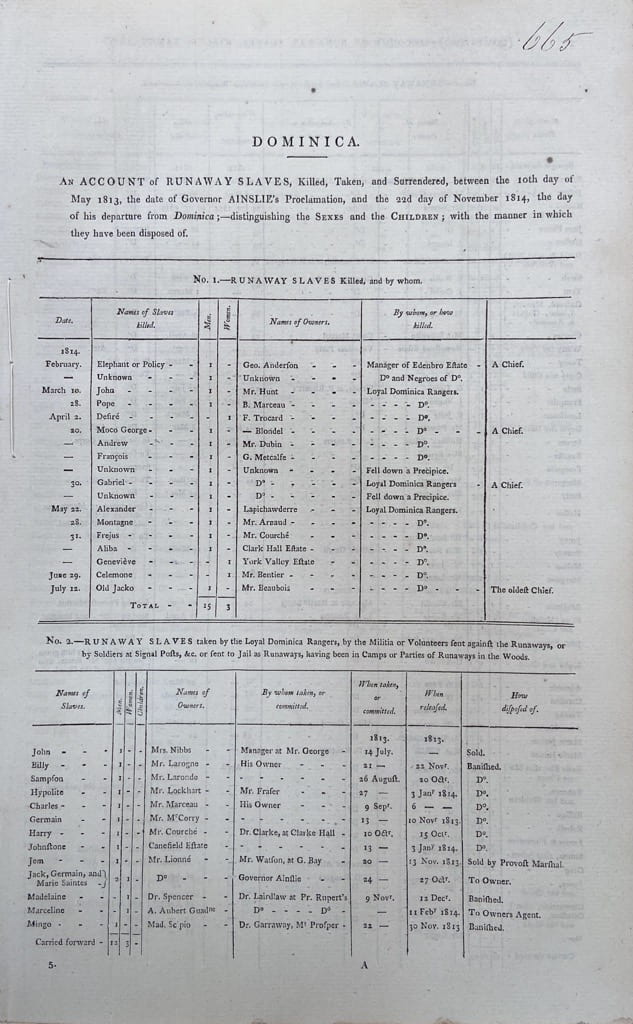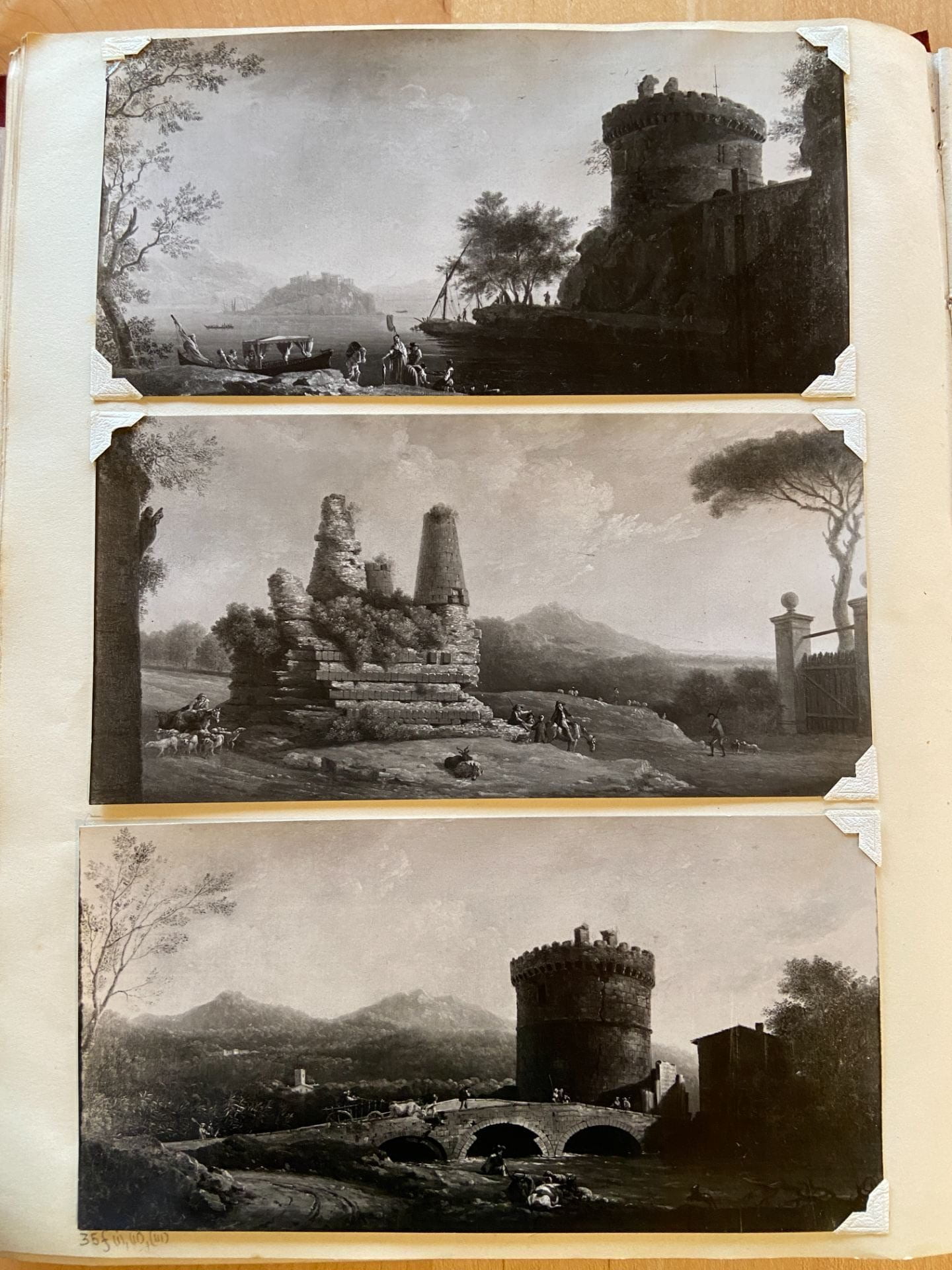Jane Wessel, Assistant Professor of English, US Naval Academy
Almost as soon as extra-illustration became popular in the late eighteenth century, people began worrying about what it would mean for the integrity of books. Extra-illustration was the practice by which readers would add materials – usually prints, but also sometimes playbills, manuscripts, and other ephemera – to their books before having them bound. Would readers searching for prints to insert into their books destroy other books to find them? In 1903, J.M Bulloch wrote sentimentally of James Granger, whose Biographical History of England (1769) set off the trend, “little did Granger, as he led his blameless life in Oxfordshire, at war with no man, dream of the turmoil that he was to raise and the vista of annihilation that his admirable enthusiasm was indirectly to create, for by a curious irony his desire to record the existence of certain prints has led to the destruction of thousands of books.”[1] But Granger did dream of this future “turmoil”: in a letter written on December 30, 1769, Granger worried that “Iconomania, a new Disease prevails much in London. One Symptom of it, in which it differs from all other Kinds of Madness is, that it delights in maiming of old Books.”[2] This sort of panicked language of “maiming” and “annihilation” frequently accompanied discussions of extra-illustration.
Even if some old books were destroyed in the process, though, the resulting extra-illustrated books are treasure-troves for scholars. Extra-illustrated books have preserved many manuscript letters and other ephemeral materials within the durable codex. Some of these materials might otherwise have been lost. These books also give 21st-century scholars insight into how 18th- and 19th-century readers interacted with their books: what they thought worth collecting and saving, how they imagined the relationship between image and text. As a theatre historian, I am particularly interested in how readers augmented the biographies of their favorite actors and actresses. These books are evidence of early fan communities and show how theatre fans celebrated their favorite performers. These unique, modified books that so worried 19th-century bibliophiles are now objects of great scholarly interest.
During my most recent visit to the Lewis Walpole Library, I encountered a book that flips the narrative: an extra-illustrated book that was pulled apart for the material it enclosed. Why would a later collector deconstruct the unique extra-illustrated book he paid so much to acquire? What might this tell us about how later collectors valued and thought about extra-illustration?
When Wilmarth Lewis – collector and founder of the Lewis Walpole Library – bought an extra-illustrated copy of Thomas Moore’s Memoirs of the Life of the Right Honourable Richard Brinsley Sheridan (1825) at auction in 1954, he knew even before he bid on it that he would be destroying the book. The story about Lewis’s purchase, his motivations, and how he treated the book upon acquisition is a fascinating one and can reveal a great deal about what he valued as a collector.
On May 7, 1954, Lewis wrote to his agent Kenneth Maggs, asking him to bid on Lot 266 in the May 25 Sotheby’s sale. Lot 266 was part of the property of the late Lady Wavertree, the great great granddaughter of the playwright Richard Brinsley Sheridan, and this particular item was described in the auction catalogue as:
266 Moore (T) Memoirs of the Life of Richard Brinsley Sheridan, First Edition, 1 vol., 4to, inlaid to folio size and Extended to 4 Vol. by the insertion of about 160 engraved portraits and coloured caricatures, autograph letters from Samuel Johnson, Horace Walpole, David Garrick, Lord Chesterfield, Warren Hastings and others, and the Holograph Draft of Sheridan’s Comic Opera: The Foresters, with specially printed titles and printed transcripts of the more important letters, green levant morocco, gilt line panelled sides and backs, in 4 morocco slip-cases, in a wire-fronted cabinet with reading-desk top. (Sotheby 45) [3]

Thomas Moore, Memoirs of the Life of the Right Honourable Richard Brinsley Sheridan (London: Longman, Hurst, Rees, Orme, Brown, and Green, 1825), 4 vols., 53 Sh52 M78, Lewis Walpole Library, Yale University.
Lewis was undoubtedly interested in these volumes primarily for the one autograph letter written by Horace Walpole bound in rather than for what the unique volumes might reveal about how a particular reader interacted with the Sheridan biography. Nor was Lewis alone in this. A contemporary collector, Donald F. Hyde – whose collection now resides in the Houghton Library’s Donald and Mary Hyde Collection of Dr. Samuel Johnson – was similarly eyeing this lot for one manuscript letter bound into the books. Hyde, of course, wanted the Johnson letter. When Lewis wrote to Maggs asking him to bid on the lot, he noted “this morning I talked with Mr. Donald Hyde on the telephone about it and he will not bid on it because I have assured him that I shall turn the Johnson letter over to him if I get the lot.” From the start, then, Lewis knew he would be removing at least one letter from the books.

Wilmarth Lewis to Kenneth Maggs, May 7, 1954, Wilmarth Sheldon Lewis Papers, Series I. Correspondence, LWL MSS 20 Box 88, Folder 4, Lewis Walpole Library, Yale University.
Lewis wasn’t sure what the volumes would be valued at, and so he initially suggested bidding £200 or £300. When Maggs suggested that they would likely sell for higher, Lewis replied “yes, please exceed £300 if you find you have to. Because of my promise to Mr. Hyde I am under even stronger compulsion than usual! This lot is a ‘must’ for me.”[4] Maggs successfully bought the lot for Lewis, but at a much higher price than Lewis anticipated: £580. Maggs assured him, however, “I feel sure that these volumes will give you considerable pleasure.”[5] Lewis called the price “hair-raising,” but consoled himself that “there are compensations for it.”[6] Eager to get the Johnson letter to Hyde as quickly as possible, and fearing that the heavy volumes would need to be sent by freight, Lewis asked Maggs to cut out the Johnson letter and send it separately: “It would not be possible to send the volume with the Johnson letter on by parcel post? I am rather anxious to get that sooner than freight would mean. Or, better still, since I am going to cut it out of the volume and give it to Mr. Hyde perhaps you could cut it out for me – I am sure you would do it better – and send it to me by air, registered and insured for £100.”[7] Maggs didn’t receive this letter in time, however, and the Johnson letter traveled with the rest of the lot via “bulk post.”
Correspondence between Lewis and Hyde reveals that as soon as he received the volumes, Lewis cut out the Johnson letter and sent it to Hyde, who was “very pleased with it,” calling it a “notable addition to our library.”[8] Hyde, in turn, sent Lewis $200 for the letter, which Lewis graciously accepted. In his final letter to Hyde on the subject, Lewis writes that “the extra-illustrations turn out to be well above the sort of thing that was usually done, and, altogether, I am feeling better about my purchase.”[9] In a draft of that letter, however, he writes, “the Sheridaniana turn out to be rather important, and I can reduce the swelling still further by turning them over to the Yale Library.” Lewis’s phrasing is curious: what exactly did he mean by “swelling”? At first I assumed that he was referring to the literal size of the volumes, which he elsewhere referred to as “super-colossal.”[10] Because he makes the comment in a note thanking Hyde for the $200 he sent, it’s also possible that he was referring to the “swelling” of the cost from his initial estimate of £300 to the £580 he ultimately paid.

Wilmarth Lewis to Donald Hyde, June 26, 1954. Wilmarth Sheldon Lewis Papers, Series I. Correspondence, LWL MSS 20 Box 67, Folder 5, Lewis Walpole Library, Yale University

draft of letter from Wilmarth Lewis to Donald Hyde, June 26, 1954 on obverse. Wilmarth Sheldon Lewis Papers, Series I. Correspondence, LWL MSS 20 Box 67, Folder 5, Lewis Walpole Library, Yale University
The unsent draft provides some insight into how Lewis handled the books after sending Hyde the Johnson letter: he continued to cut out manuscript letters. Lewis notes that he will turn original manuscript letters over to the Yale Library. And indeed, he did just that. While the extra-illustrated volumes still contain the engraved portraits and caricatures that were originally inserted, the vast majority of manuscripts are removed, with a stub of paper left where the cut was made. Luckily because the extra-illustrator also inserted transcripts of most of the manuscripts, we still have evidence in the books of what was once there. Lewis, moreover, was fastidious about indicating what he removed and where it went, adding pencil notes about this on the transcripts or on the stubs. Except for the Johnson letter, most of the manuscripts were either “given to Yale” (the main campus) or “removed for Farmington” (his own collection, which would eventually become part of Yale’s collections).

The stub of paper remains where a manuscript letter from Longman & Co. to C.B. Sheridan was removed. Across from the removed manuscript, the extra-illustrator included a transcript of the letter, on which Lewis has noted “given to Yale.”
If the additional materials in typical extra-illustrated books are evidence of how readers and collectors interacted with their books, so too are Lewis’s removals. Part of what makes these volumes so fascinating is that we have clear evidence of what Lewis did with the books after purchasing them. He clearly indicates through his pencil markings what he removes and where it goes. He may have seen the letters as valuable objects that should be housed in manuscript collections outside of the codex. The portraits and caricatures, meanwhile, he left be. Lewis seems to have been perfectly comfortable deconstructing the volumes, enacting the same sort of destruction that extra-illustration’s detractors feared. But a more positive way of looking at this is that Lewis’s removals add another layer of reader interaction to an already interactive reading process.
This blog post is related to a larger project I’m working on about extra-illustrated books and theatrical fan communities. I’m grateful to the Lewis Walpole Library for awarding me a two-week travel grant and to everyone at the LWL for their support during my time there. Special thanks to Sue Walker for first pointing me towards these extra-illustrated Sheridan volumes and Scott Poglitsch for working with me to learn more about their provenance.
__________
[1] J.M. Bulloch, The Art of Extra-Illustration (London: Anthony Treherne & Co., LTD., 1903), 14.
[2] James Granger facsimile letter in Charles John Smith, Historical and Literary Curiosities, Consisting of Fac-Similes of Original Documents …. (London: Henry G. Bohn, 1852), Lewis Walpole Library, Yale University, 63 852 Sm5.
[3] Catalogue of Valuable Printed Books Music, Autograph Letters, Literary Manuscripts and Historical Documents Comprising The Property of Sydney A Spence, Esq. The Property of the Most Hon. The Marquess of Bath, the Property of the Dowager Lady Aberconway, the Property of the Late Paul Hirsch, Esq., and The HIghly Important Sheridan Collection the Property of the Late Lady Wavertree, C.B.E., Sotheby’s Auction Catalogue, May 24-5, 1954, page 45. Lewis Walpole Library Sales and Auction Catalog Collection, Lewis Walpole Library, Yale University, Series 2. Sotheby’s, 1901–2008 125 L979, Box 198, Folder 12.
[4] Wilmarth Lewis to Kenneth Maggs, May 14, 1954, Wilmarth Sheldon Lewis Papers, Series I. Correspondence, LWL MSS 20 Box 88, Folder 4, Lewis Walpole Library, Yale University.
[5] Kenneth Maggs to Wilmarth Lewis, May 26, 1954.
[6] Lewis to Maggs, May 29, 1954.
[7] Lewis to Maggs, May 29, 1954.
[8] Donald Hyde to Wilmarth Lewis, June 24, 1954, Wilmarth Sheldon Lewis Papers, Series I. Correspondence, LWL MSS 20 Box 67, Folder 5, Lewis Walpole Library, Yale University.
[9] Lewis to Hyde, June 26, 1954.[10] Lewis to Hyde, June 22, 1954.
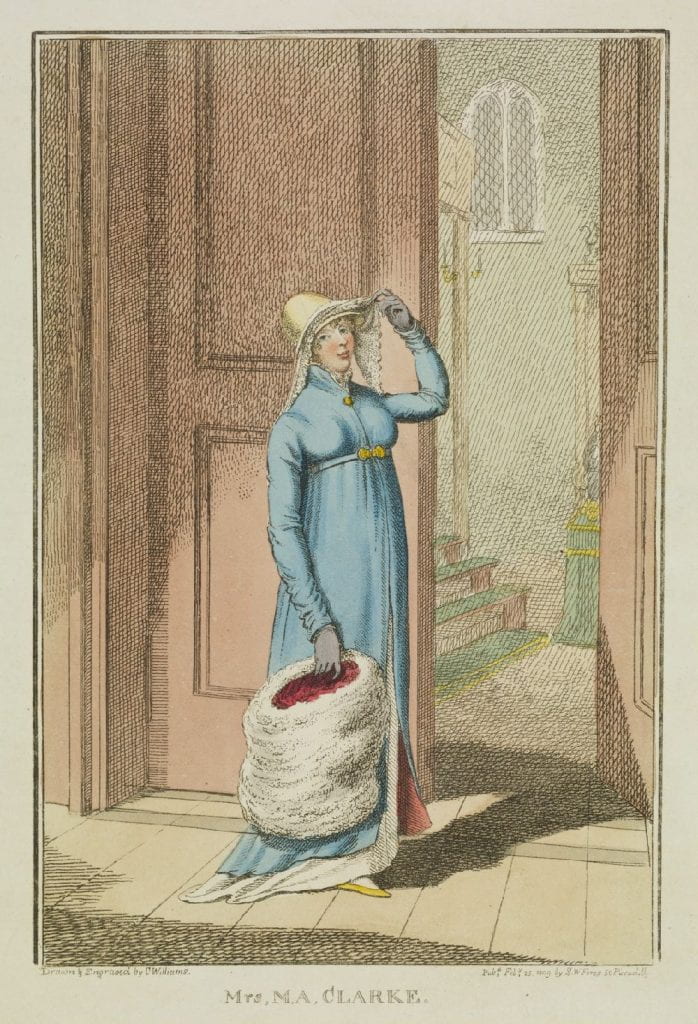
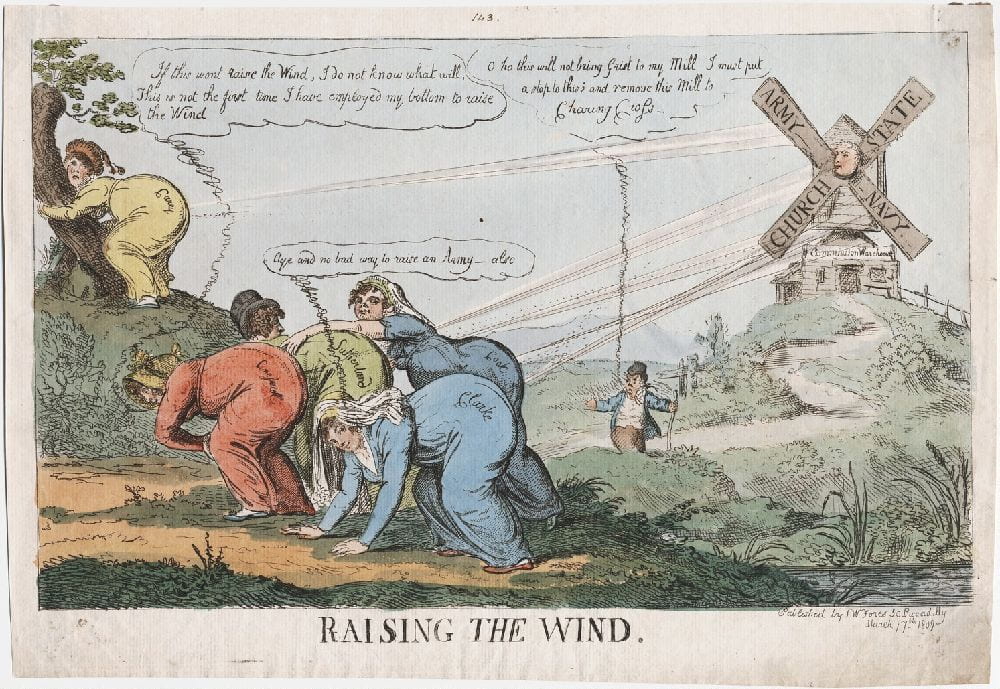

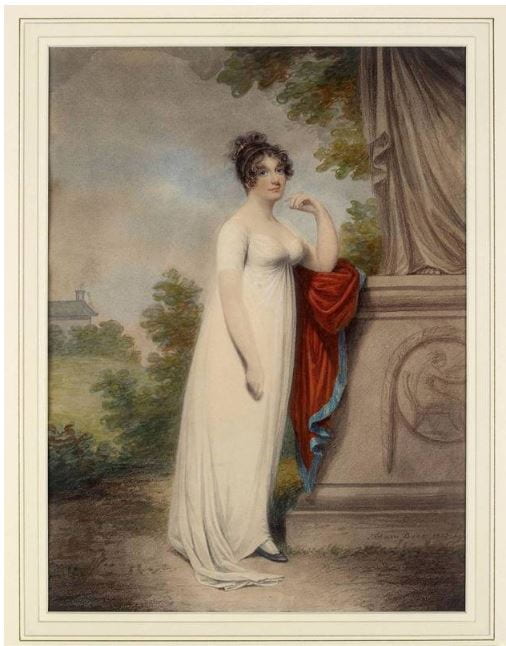



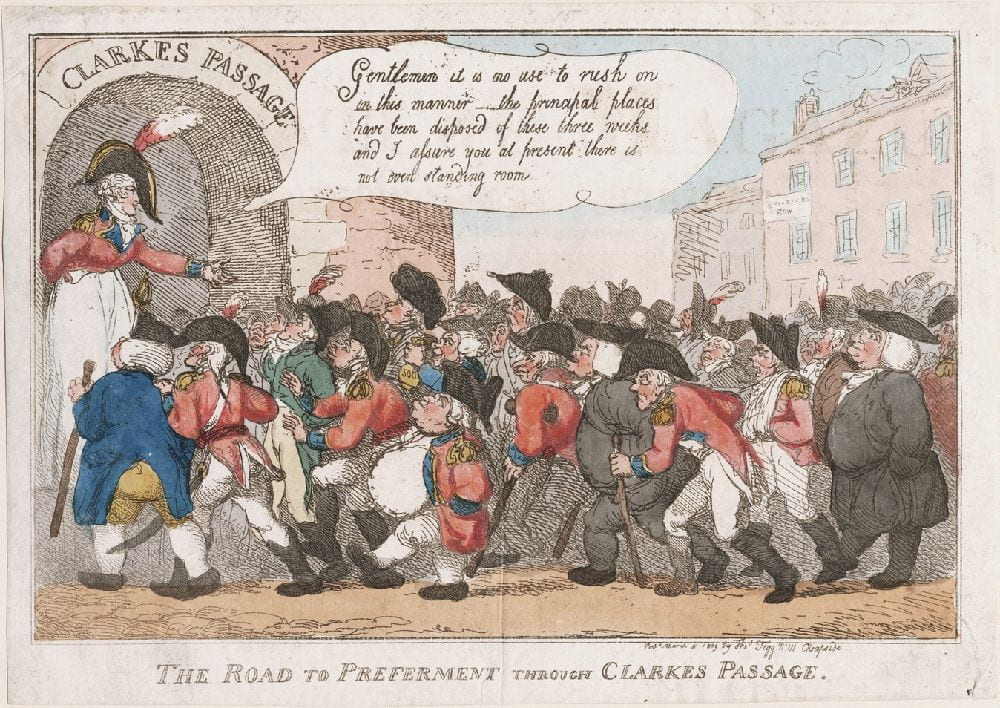
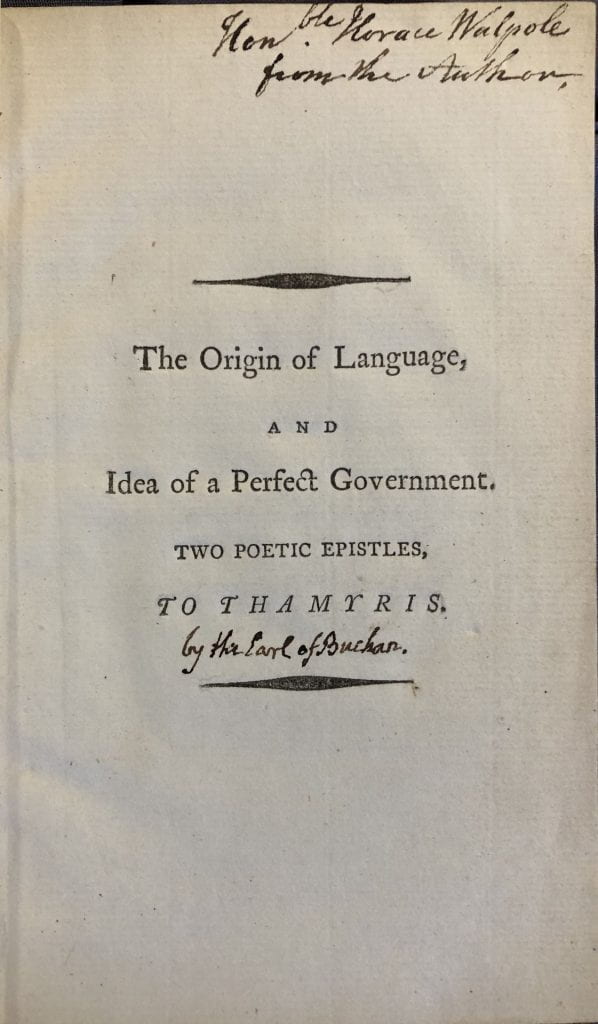

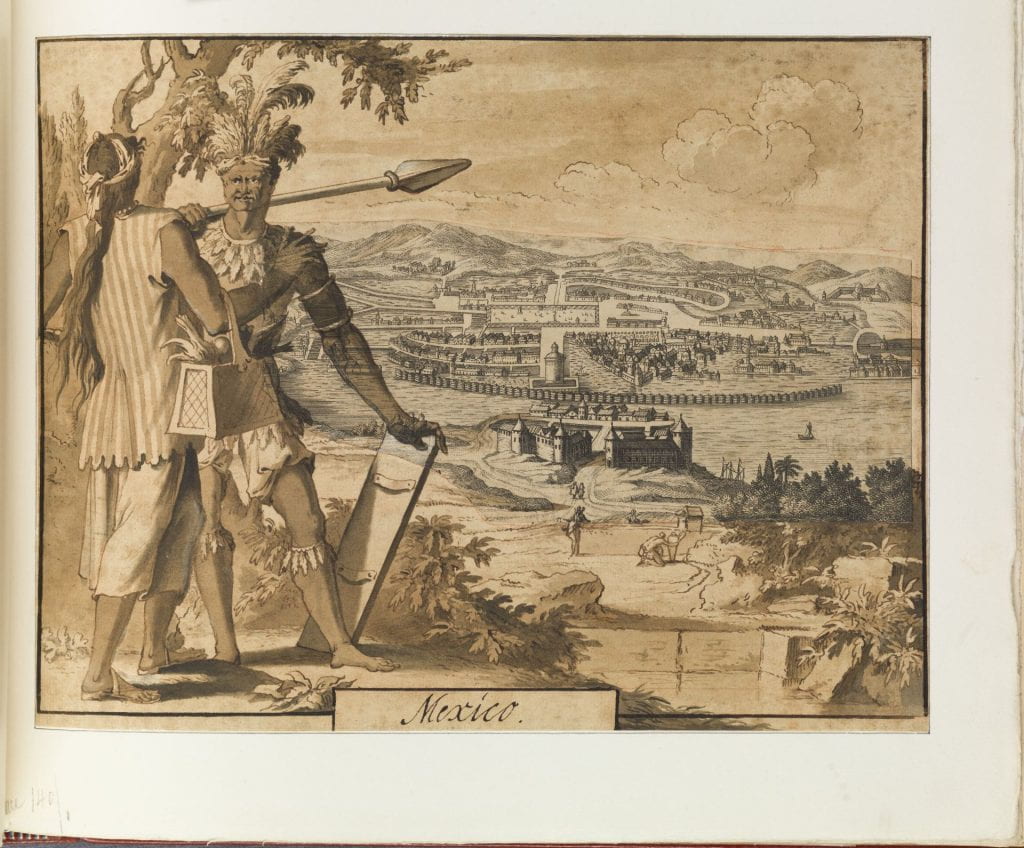
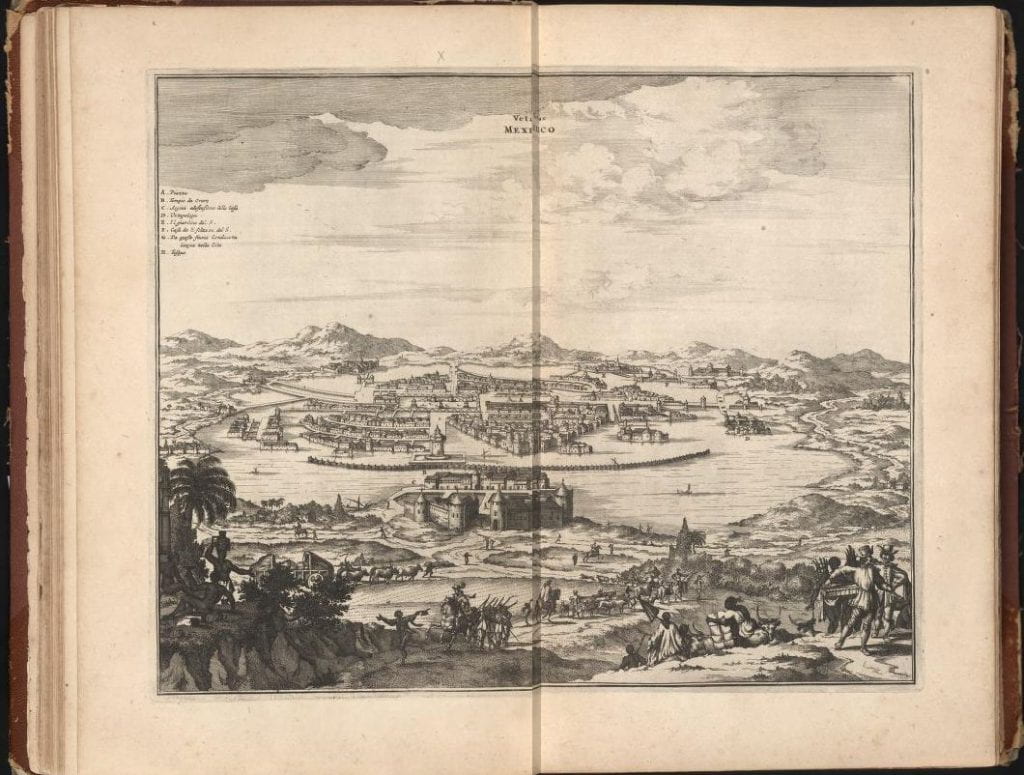

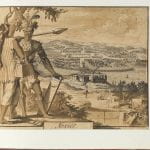
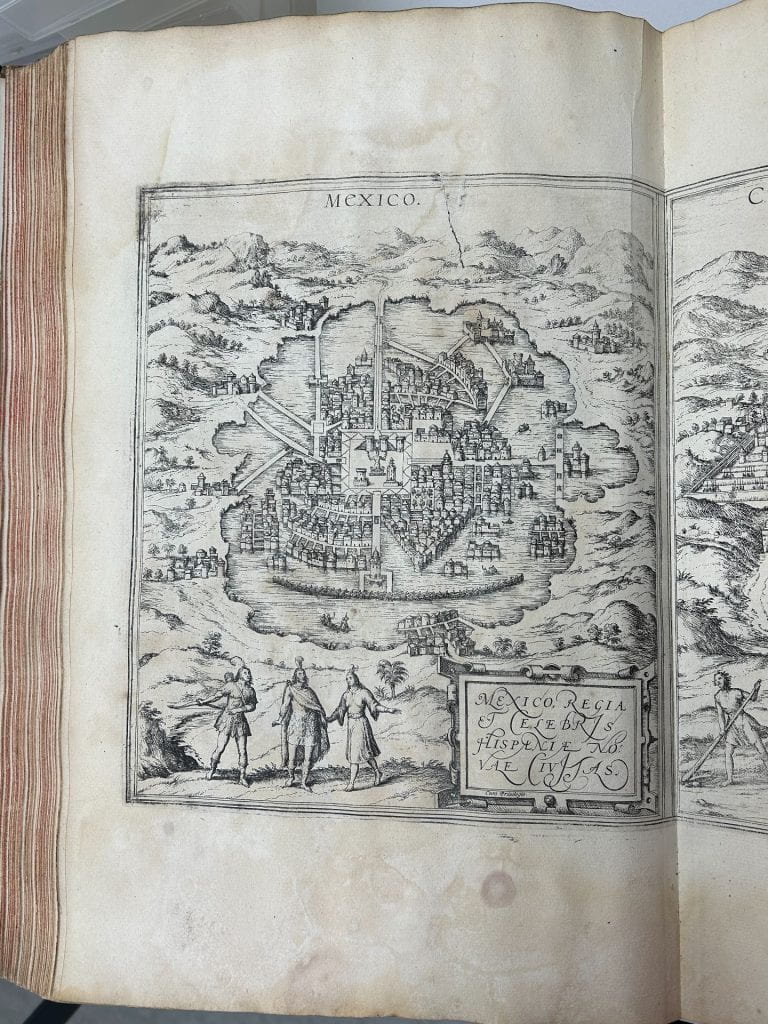






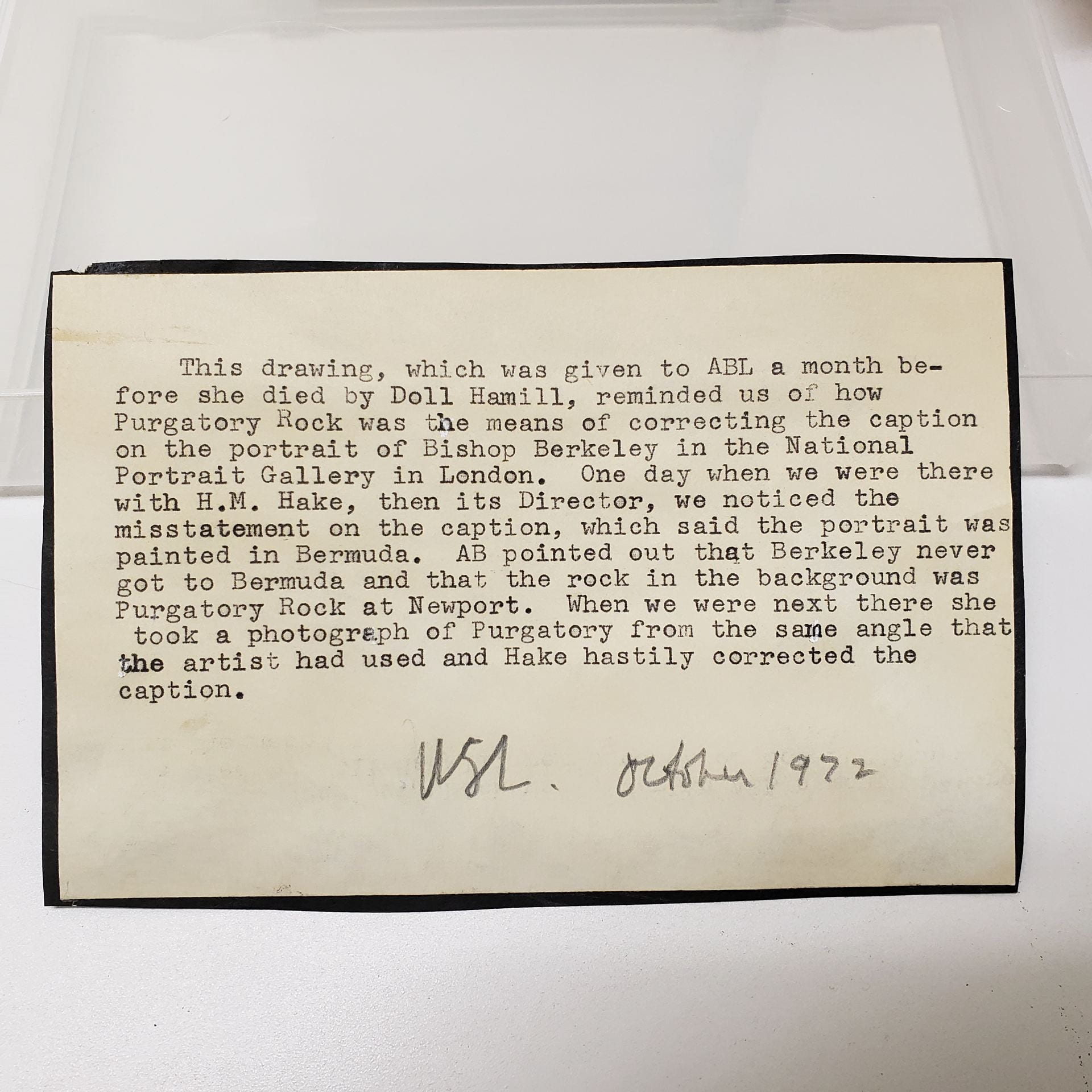




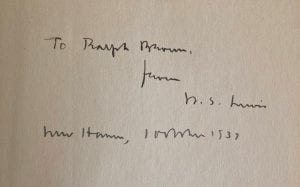
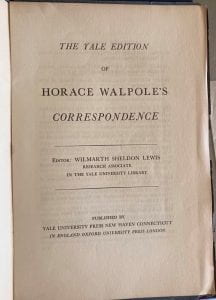

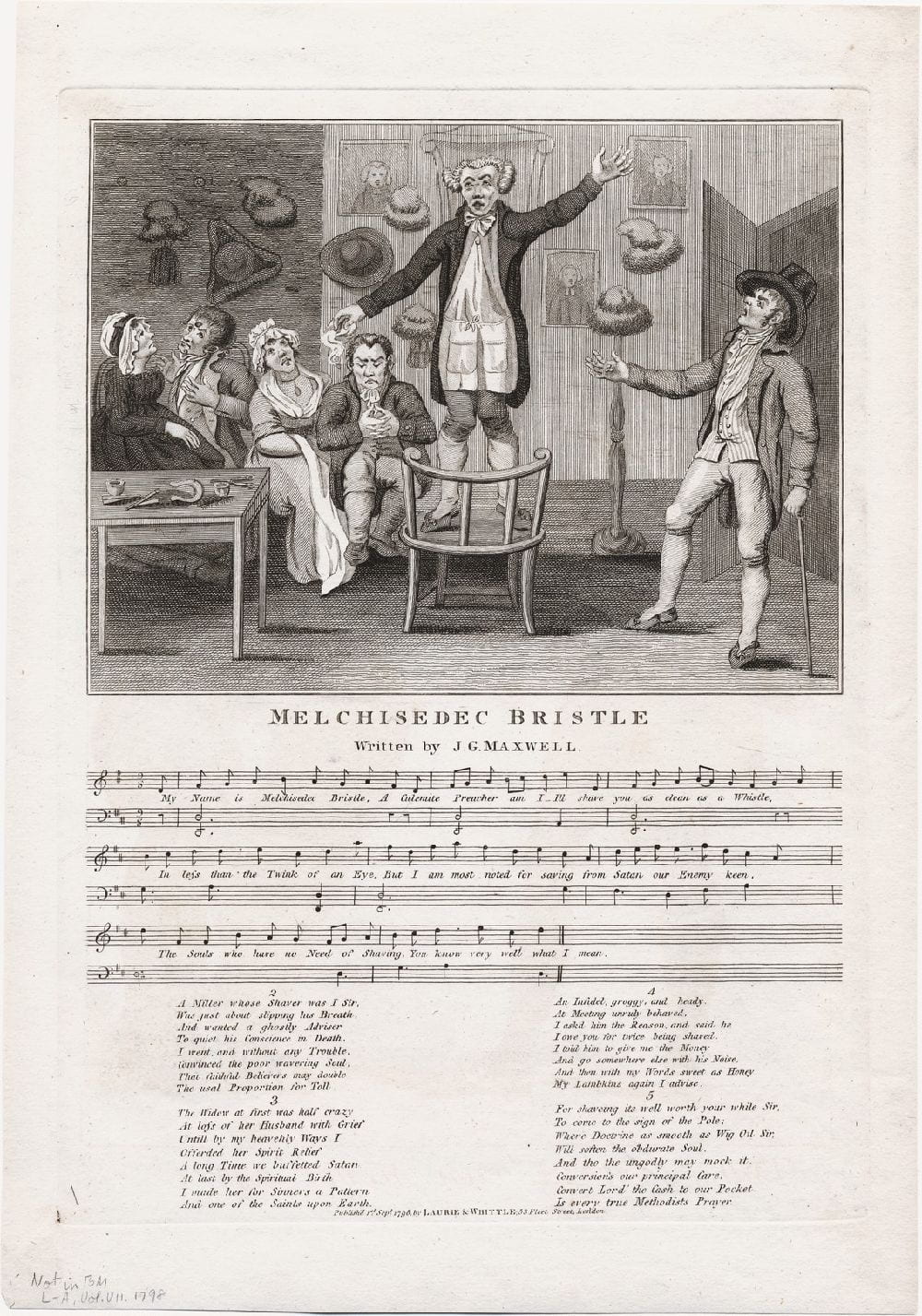
![Two separate images illustrate Charles Fox's contrasting political pronouncements. On the left, "in private," Fox, with fox's head, is sitting in front of a fireplace in which "An Essay on Politic Sperit [sic]" is being consumed by flames while Fox points to a large document, his political creed, spread on the table to his right. From his coat's pocket sticks out "A Panegyric on Lord North." In the foreground, a monkey plays with a pamphlet "The tru[e] principle of the Constitut[ion]," next to a bundle of books comprising MacCauley's, Locke's and Sydney's works, marked "To Be Sold." On the right, "in publick," Fox, standing on a platform and cheered by a large crowd, including 'Sir' Jeffrey Dunstan, advocates views opposed to those in his creed on the left](https://campuspress.yale.edu/scholarsprogress/files/2023/04/Vox-Populi-1024x799.jpg)

